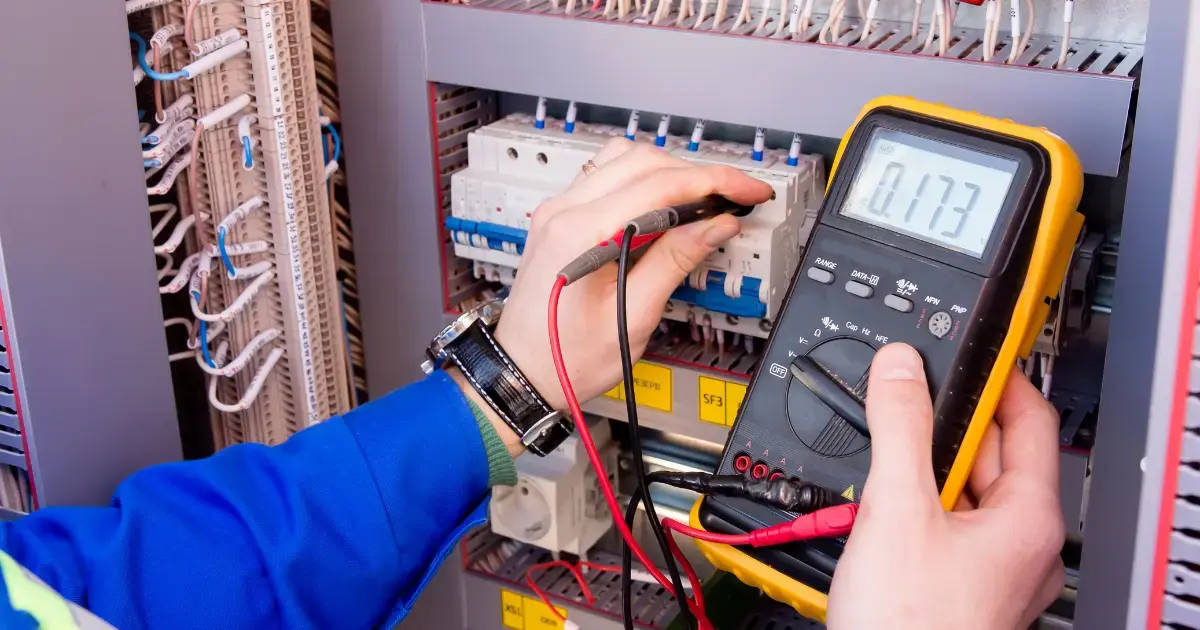Fixing electronics is a lot like home improvement projects. The more your skills grow and the more confident you become, the more tools you accumulate.
Electronics repair is a highly niche but highly competitive space, and having all the technical knowledge in the world is nothing if you don’t have the right tools for the job.
While improvising with cheap alternatives might be fine for hobbyists, it won’t cut it when you leap into running your own electronics repair business.
Investing in quality tools for fixing electronics will transform your business and make repairs easier. And the faster and more efficient your repairs, the happier customers will be.
|
The 8 Tools You’ll Need At A Glance |
Affordable vs. Quality Tools: Does It Matter?
If you’re making the jump from hobbyist to repairing electronics as a business, you might be tempted to use the same sets of tools you used at home. After all, they worked just fine for you; why wouldn’t they work for your customers?
While this approach might be OK for some things, many home repair kits are simply not built for the volume of repairs a professional repair shop has to handle. Using cheap tools that break means more money and dissatisfied customers in the long run.
That’s why many electronics repair business plans include quality tools and workspaces at the top of their initial investment needs.
In short: being cheap isn’t worth the long-term fallout. That said, we understand that money may be tight, and investing in everything at once isn’t realistic for many people.
Do market research to understand what types of repairs are most in demand as a starting point. This ensures you’ll have the highest quality tools for the most popular jobs.
8 Vital Tools for Fixing Electronics
Whether you’re starting an electronic repair shop for the first time or expanding your operation, having the right tools is just as important as great customer service and a popular location.
Here’s an overview of the eight key tools you need for fixing electronics as a business:
1. A Good Light System
At the top of our list of essential tools for fixing electronics is also one of the simplest.
We’ve all suffered trying to get into the guts of a machine only to be defeated by an awkward shadow or dark corner. One of the first things you should invest in is a high-quality light.
Related Read: 10 Phone Repair Tools Every Cell Phone Repair Shop Needs
Buy a bright light with a flexible arm so you can move it around as needed. Some work lights also come with a built-in magnifying glass, which can be handy for certain repairs.
As your workspace grows, you should also consider mounting lights under your shelves to ensure every part of your workspace is well-lit.
2. Quality Screwdrivers, Pliers, and Tweezers
While more advanced tools like soldering irons and power supplies are important (more on them later), there are very few repairs you’ll do that won’t require a good set of hand tools.
Invest in a quality set of screwdrivers for basic repairs, ideally with magnetized heads to keep everything from flying off. You may also want to invest in some smaller screw heads if you’re doing work on smaller components or computers.
Whether you buy a tool with swappable heads or just a set of different sizes is really up to preference. Go into your repair ticketing system to see if your repair types are varied enough to warrant the investment.
As far as pliers, tweezers, and cutters go, this is an area where the basic set in your average toolkit isn’t going to cut it. Non-specialized pliers and tweezers tend to slip when dealing with electronic parts or dull after a few uses. Pick up different sizes and shapes of needle nose pliers (bent, long, short, etc.) along with a solid set of wire cutters.
3. Soldering Tools
If you use cheap screwdrivers, you might take more time on a repair than you otherwise would at best and strip a screw at worst. An annoying issue, but not fatal. If you use cheap soldering tools, however, you might just end up destroying the component you’re working on.
Good luck getting business after that.
The most important aspect of a soldering iron is the ability to adjust the temperature to exactly where you need it. Also, get an iron with swappable tips for different types of jobs.
Keep in mind, if you’re working at high temperatures, you’ll need work mats that can withstand the heat and won’t build up electrical charge. We recommend an ESD mat for the job.
Finally, buy high-quality solder and cleaners to make sure your soldering work is set to last.
4. An Oscilloscope
An oscilloscope (also called an o-scope) is a tool used to troubleshoot electronic circuits to make sure they are working as expected. It does this by showing the waveform of a signal to see that components are behaving as expected.
O-scopes vary pretty wildly in price range and quality, and your needs will depend a lot on the type of repairs you’re doing. There are the traditional large boxes with a wider frequency range and smaller, handheld models.
If you’re not rebuilding circuit boards or doing other detailed repairs, a cheaper version should work just fine for your shop.
5. Tools Cabinets and Parts Bins
This one may feel like cheating because it’s not technically a tool —- but trust us, it’s important. Good organization will be key to delivering quick repairs and excellent customer service as your business picks up.
Each workstation should have an organized tool cabinet for the various types of tools. This way, when you need that one specific screwdriver or pair of cutters, you’ll know exactly where it is.
You should also have parts bins that make your most needed parts easily accessible. We highly recommend using an inventory management system for your parts, so you know exactly what you have in stock at all all times. Set up a reorder threshold on your system so the minute a part is assigned to a repair ticket and stock is running low, you’ll know when it’s time to reorder.
6. Multimeters
A multimeter is used to test batteries, circuit function, live outlets, and other electrical functions. While we don’t recommend buying a super cheap, or off-brand model, this is a device that a basic model should work just fine for most repairs.
If you’re shopping on sites like Amazon, one tip is to google the manufacturer to see if they have a website or product listings on other shopping sites. This will ensure you buy from an actual brand with real tech support if something goes wrong.
Most multimeters need you to manually specify an expected signal range to test, but if you’re willing to spend more money, some multimeters have an auto-range function that makes that part of the process much easier.
7. A Bench Power Supply
While not a dealbreaker, a bench power supply can be useful for businesses doing more advanced repairs. They convert power to a controlled and adjustable voltage and current that can be used to run diagnostics.
With a bench power supply, you can safely test electronic circuits, understand current draw, or see how individual components are performing. It’s also a way to safely test a rebuilt circuit without risking damage.
8. A Repair Ticketing System
Last but not least, if you run a repair shop, having a centralized place to track repairs, assign technicians and parts, and communicate with customers is a must.
A simple spreadsheet might be fine if you’re doing electronic repairs out of your garage. But if you have ambitions to grow and beat the competition, you’ll need to use repair ticketing software.
Repair ticketing software like CellSmart POS helps streamline the repair process end-to-end. A reliable repair ticketing software will allow you to:
- Create tickets and initial quotes
- Input and track customer information and device history
- Track inventory and assign parts
- Assign technicians and create to-do lists
- Take pre and post-repair images
- Send automated repair status communications
All of these are essential for creating a consistent, simplified repair process — which is essential for success as you grow and open multiple locations. Also, communicating and marketing directly to customers is invaluable to delivering a modern customer experience.
Last, we recommend using a system that is integrated directly with a point of sale (POS) and payment system. This makes it easier to create accurate estimates and speed up the payment process.
Additional Tips for Running a Successful Repair Shop Business
Quality tools for fixing electronics and technical know-how are essential if you’re getting into professional repair. But they’re only one piece of the puzzle.
Running a repair shop is more competitive than ever, and understanding every aspect of the business is essential to getting a leg up on the competition and bringing in customers.
Here are some extra resources to make your electronics repair journey a smooth one:
- Managing an Electronics Repair Shop: 8 Mistakes To Avoid
- 5 Electronics Repair Shop Management Software (+ Reviews and Pricing)
- Crafting a Cell Phone Repair Marketing Strategy: 4 Ideas
For more tips, follow us on Facebook. If you’re ready to get your business running, schedule a custom demo today to see how CellSmart POS can streamline the repair process, manage inventory, and increase sales.





